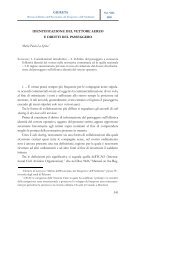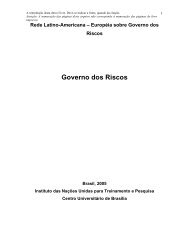Rome II and Tort Conflicts: A Missed Opportunity Abstract Contents
Rome II and Tort Conflicts: A Missed Opportunity Abstract Contents
Rome II and Tort Conflicts: A Missed Opportunity Abstract Contents
Create successful ePaper yourself
Turn your PDF publications into a flip-book with our unique Google optimized e-Paper software.
SYMEON C. SYMEONIDES ROME <strong>II</strong> AND TORT CONFLICTS<br />
something. What it may mean is that—consistently with the admonition to “do justice<br />
in individual cases” in recital 14—a court should keep in mind (for example, in<br />
applying the closer connection escape) the need to adequately compensate victims of<br />
traffic accidents. Unfortunately, even if this argument is accepted, it cannot help the<br />
Belgian hunting accident victim or the injured tourist in the snow avalanche<br />
hypothetical because they were not victims of a traffic accident, although they were<br />
equally deserving of protection.<br />
146. Art. 5 makes no distinction between situations in which the product was acquired by the victim<br />
<strong>and</strong> situations in which the product was acquired by a third party, such as a previous purchaser<br />
or a transportation carrier. For the significance of this distinction, see SYMEONIDES, THE<br />
CHOICE-OF-LAW REVOLUTION 268-70, 351-52.<br />
147. Art. 5, <strong>and</strong> <strong>Rome</strong> <strong>II</strong> in general, offer little guidance for cases involving peripatetic injuries, such<br />
as cases involving pharmaceutical products used by their eventual victims over long periods of<br />
time while residing in different countries. For the American experience on this matter, see<br />
SYMEONIDES, THE CHOICE-OF-LAW REVOLUTION 268-69.<br />
148. ROME <strong>II</strong>, art. 5(1).<br />
149. Id.<br />
VI. PRODUCTS LIABILITY<br />
Article 5 provides a special rule for non-contractual obligations arising from<br />
an injury caused by a product. Paragraph 1 of the article designates, in successive<br />
order, three countries whose law may govern: (a) the country of the victim’s habitual<br />
146<br />
residence; (b) the country in which the product was acquired; <strong>and</strong> (c) the country in<br />
147<br />
which the injury occurred. The application of each country’s law depends on<br />
148<br />
whether the product was “marketed in that country.” For example, if a German<br />
plaintiff is injured in India by a product acquired in Egypt, the applicable law will be<br />
that of Germany, if the product was marketed there; or, if not, Egypt, if the product<br />
was marketed there; or, if not, India, if the product was marketed there.<br />
It appears that the burden of proving that the product was marketed in the<br />
particular country would rest with the plaintiff, although the defendant may also have<br />
an incentive, <strong>and</strong> should be allowed, to either disprove or prove that fact. Moreover,<br />
the last sentence of paragraph 1 expressly gives defendants a defense—they can avoid<br />
the application of the law of each of the above three countries by demonstrating that<br />
they “could not reasonably foresee the marketing of the product, or a product of the<br />
149<br />
same type” in that country. If taken literally, this could mean that, even if the<br />
plaintiff proves (<strong>and</strong> the defendant does not disprove) that the product was actually<br />
marketed in the particular country, the defendant can still get a second line of defense<br />
by showing that, despite the actual marketing, “he or she could not reasonably foresee<br />
the marketing.” This provision is unduly generous to the defendant. Fortunately, as<br />
noted below, contemporary marketing patterns suggest that in most cases this defense<br />
56 AMERICAN JOURNAL OF COMPARATIVE LAW (2008) PAGE 34 OF 46


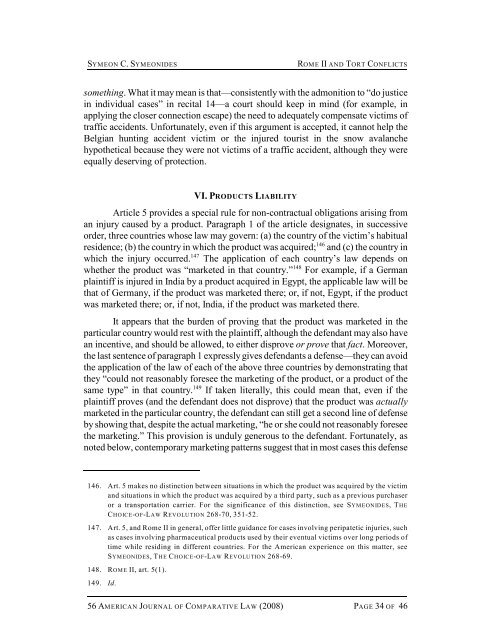
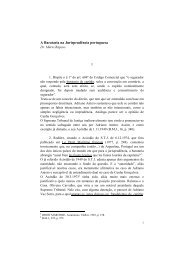

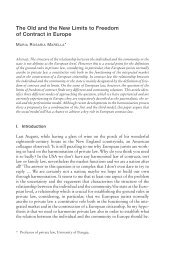

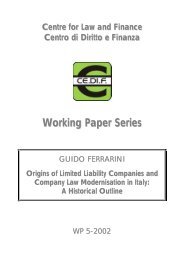
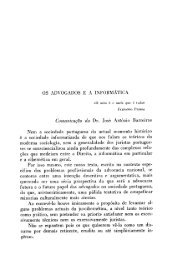
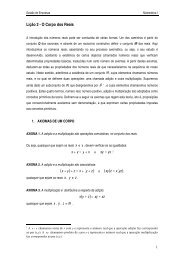
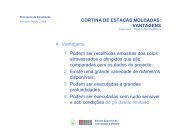
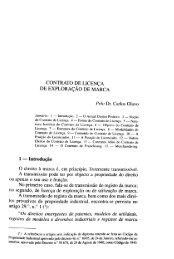
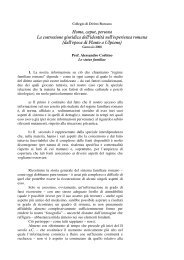
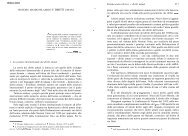

![Luigi Sapio Nozione di islām La parola “islām” [ ] è il mas.dar1 ...](https://img.yumpu.com/15836073/1/185x260/luigi-sapio-nozione-di-islam-la-parola-islam-e-il-masdar1-.jpg?quality=85)
